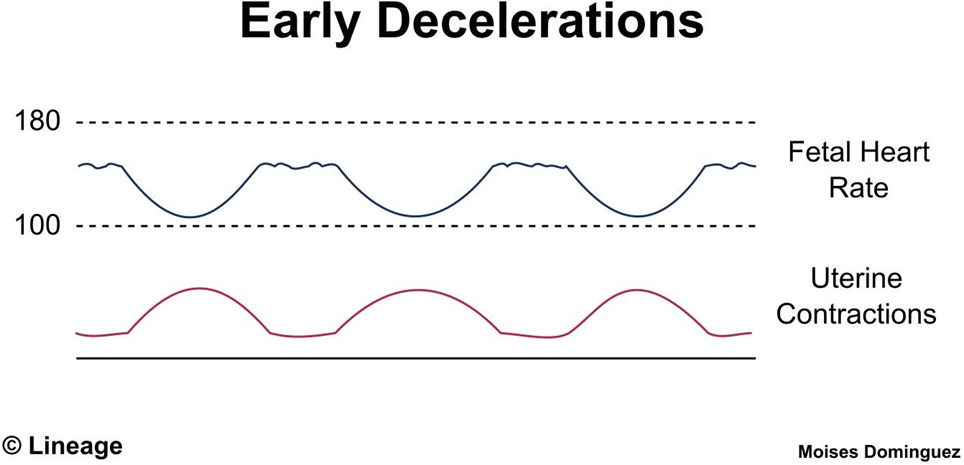A nurse is evaluating the allergy profile of a client who has Graves' disease and is to undergo a thyroid scan. The nurse should identify which of the following allergies as a contraindication for the client to undergo a thyroid scan?
Eggs
Latex
Peanuts
Iodine
The Correct Answer is D
A. Allergies to eggs are not typically a contraindication for a thyroid scan.
B. Latex allergies are not typically a contraindication for a thyroid scan unless latex-containing materials are involved in the procedure, such as gloves or adhesive bandages.
C. Allergies to peanuts are not typically a contraindication for a thyroid scan.
D. Iodine is the main component of the radioactive tracer used in a thyroid scan. If the client has a known allergy to iodine, it would be unsafe for them to undergo the scan.
Nursing Test Bank
Naxlex Comprehensive Predictor Exams
Related Questions
Correct Answer is A
Explanation
A.
A. Early decelerations are typically benign and occur due to head compression during
contractions. They mirror the uterine contraction pattern and are not usually associated with fetal compromise.
B. Fetal hypoxia is not typically associated with early decelerations, as they are considered a normal response to head compression during labor.
C. Abruptio placentae refers to the premature separation of the placenta from the uterine wall and is not directly related to early decelerations.
D. Postmaturity refers to a pregnancy that extends beyond 42 weeks gestation and is not directly related to early decelerations.

Correct Answer is C
Explanation
A. Hydrogen peroxide is not recommended for cleaning surfaces contaminated with blood as it is not as effective as other agents and may not adequately disinfect surfaces.
B. Isopropyl alcohol can be effective for disinfecting surfaces contaminated with blood, but it is less effective against certain bloodborne pathogens like hepatitis B virus compared to chlorine bleach.
C. Chlorine bleach is an effective agent for cleaning surfaces contaminated with blood and is recommended by CDC guidelines for disinfecting against bloodborne pathogens.
D. Chlorhexidine is primarily used as a skin antiseptic and is not typically used for cleaning surfaces contaminated with blood.
Whether you are a student looking to ace your exams or a practicing nurse seeking to enhance your expertise , our nursing education contents will empower you with the confidence and competence to make a difference in the lives of patients and become a respected leader in the healthcare field.
Visit Naxlex, invest in your future and unlock endless possibilities with our unparalleled nursing education contents today
Report Wrong Answer on the Current Question
Do you disagree with the answer? If yes, what is your expected answer? Explain.
Kindly be descriptive with the issue you are facing.
